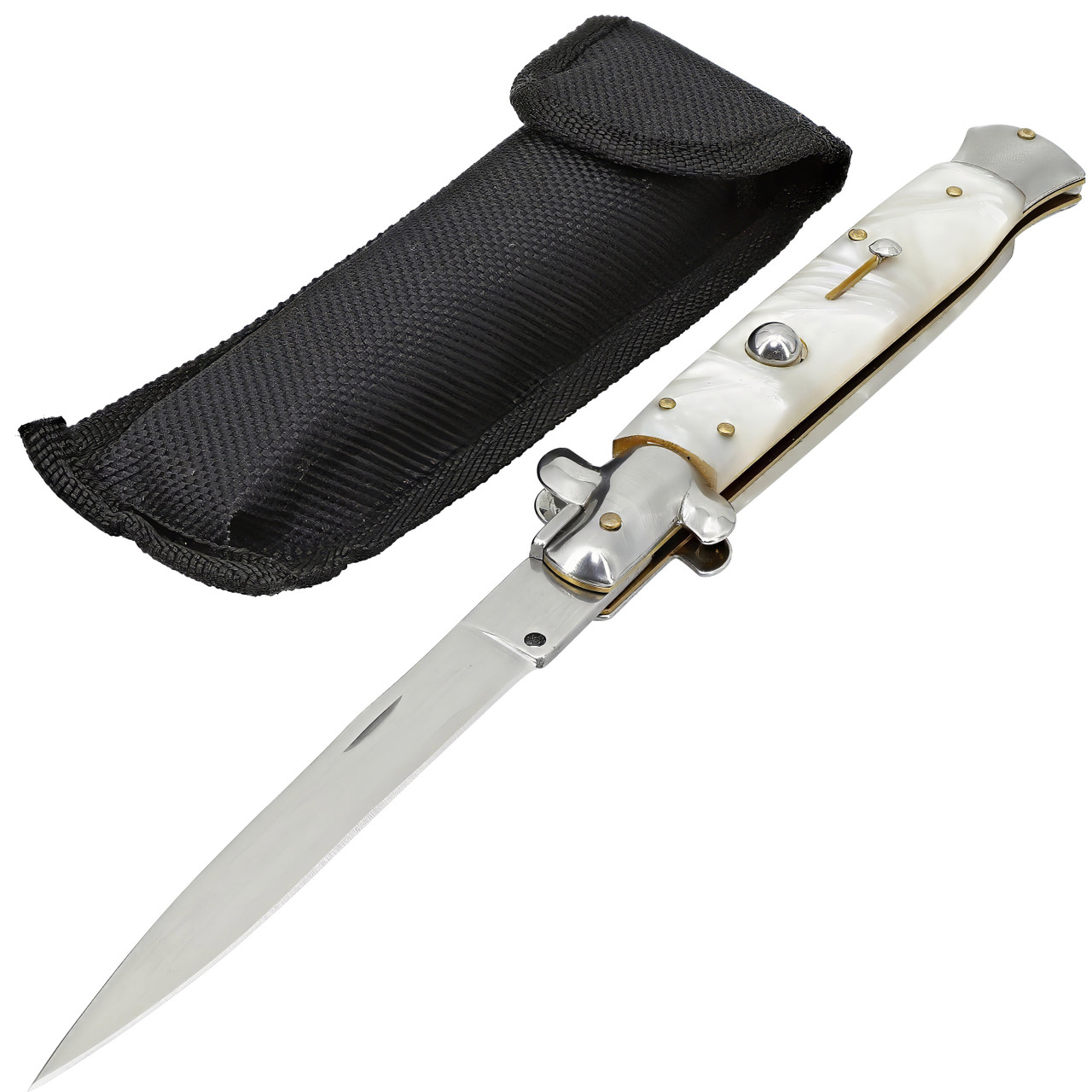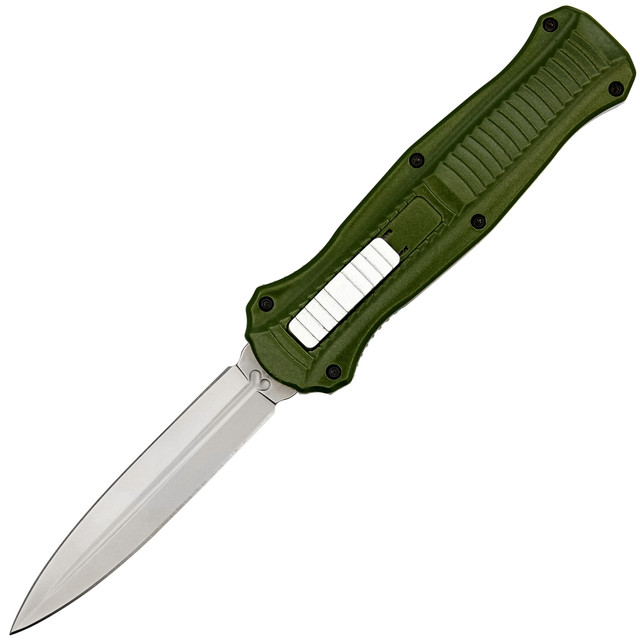Common Mistakes to Avoid When Caring for Your Automatic Knives
Posted by SwordsSwords on Aug 6th 2024
Automatic knives, especially out-the-front (OTF automatic knives) switchblades, are popular for their convenience, speed, and reliability. However, to keep them in top condition, proper care is essential. Many knife owners unknowingly make mistakes that can shorten the lifespan of their knives or impair their functionality. Here are some common mistakes to avoid when caring for your automatic knives.
1. Neglecting Regular Cleaning
One of the most common mistakes is neglecting to clean your automatic knife regularly. Dirt, debris, and pocket lint can accumulate inside the mechanism, leading to poor performance or even failure to deploy. To avoid this, make it a habit to clean your knife periodically. Use compressed air to blow out any debris from the handle and mechanism. For a more thorough cleaning, disassemble the knife according to the manufacturer's instructions and clean each part carefully.

2. Using the Wrong Lubricant
Lubrication is crucial for the smooth operation of an automatic pocket knife. However, using the wrong type of lubricant can cause more harm than good. Avoid using thick, heavy oils or general-purpose lubricants as they can attract dirt and gunk, which can clog the mechanism. Instead, use a light, high-quality lubricant specifically designed for knives or firearms. Apply a small amount to the pivot points and moving parts to ensure smooth operation.
3. Improper Storage
Storing your automatic knife improperly can lead to damage and corrosion. Avoid leaving your knife in damp or humid environments, as this can cause rust to form on the blade and other metal components. Store your knife in a dry place, preferably in a sheath or case that allows for air circulation. Additionally, avoid storing your knife in the open position for extended periods, as this can weaken the spring mechanism.
4. Using the Knife for Inappropriate Tasks
Automatic knives are designed for specific tasks, such as cutting or slicing. Using them for prying, digging, or other heavy-duty tasks can damage the blade and mechanism. Always use your knife for its intended purpose, and avoid subjecting it to excessive force or stress. If you need a tool for prying or heavy-duty work, use a tool specifically designed for that purpose.
5. Ignoring Manufacturer Instructions
Every automatic switchblade knife is different, and manufacturers provide specific instructions for the care and maintenance of their products. Ignoring these instructions can lead to improper care and potential damage. Always refer to the manufacturer's manual or website for guidance on cleaning, lubrication, and maintenance. Following these instructions will help ensure your knife remains in optimal condition.
6. Overlooking Blade Sharpening
A dull blade is not only less effective but also more dangerous, as it requires more force to cut, increasing the risk of slipping. Regularly check the sharpness of your knife and sharpen it as needed. Use a sharpening stone or a professional sharpening service to maintain a sharp edge. Avoid using pull-through sharpeners, as they can remove too much material and damage the blade.
7. Not Checking the Mechanism
The mechanism of an automatic knife is its most critical component. Failing to check it regularly can result in malfunction. Periodically test the deployment and retraction of the blade to ensure it operates smoothly. If you notice any issues, such as a sluggish or inconsistent action, disassemble the knife and inspect the mechanism for dirt or wear. Address any problems immediately to prevent further damage.

8. Exposing the Knife to Harsh Chemicals
Harsh chemicals can damage the blade and handle materials of your automatic knife. Avoid exposing your knife to bleach, chlorine, or other corrosive substances. If your knife comes into contact with such chemicals, rinse it thoroughly with clean water and dry it immediately. Using mild soap and water for cleaning is usually sufficient.
9. Over-tightening Screws
When assembling or adjusting your knife, be careful not to over-tighten the screws. Over-tightening can strip the threads or damage the handle material. Use the appropriate tools and apply moderate pressure to secure the screws. If you're unsure about the correct tightness, refer to the manufacturer's guidelines.
10. Neglecting Safety Precautions
Lastly, neglecting safety precautions can lead to accidents and injuries. Always handle your automatic knife with care and respect. Keep your fingers away from the blade path when deploying or retracting the knife. When cleaning or maintaining your knife, ensure it is in a safe, controlled environment. Use cut-resistant gloves if necessary to protect your hands.
Conclusion
Proper care and maintenance of your automatic knife are essential for ensuring its longevity and performance. By avoiding these common mistakes, you can keep your knife in excellent condition and enjoy its benefits for years to come. Remember to clean and lubricate your knife regularly, store it properly, use it for its intended purpose, and follow the manufacturer's instructions. With the right care, your automatic knife will remain a reliable tool in your collection.
When looking for high-quality automatic knives for sale, including OTF automatic knives, automatic switchblade knives, and more, visit swordsswords.com. They offer a wide selection of knives to suit your needs and ensure you get the best products for your collection.

